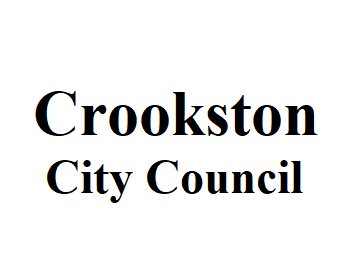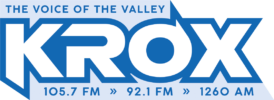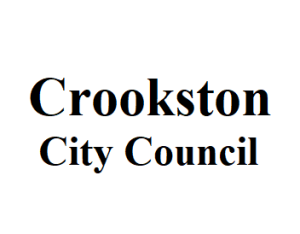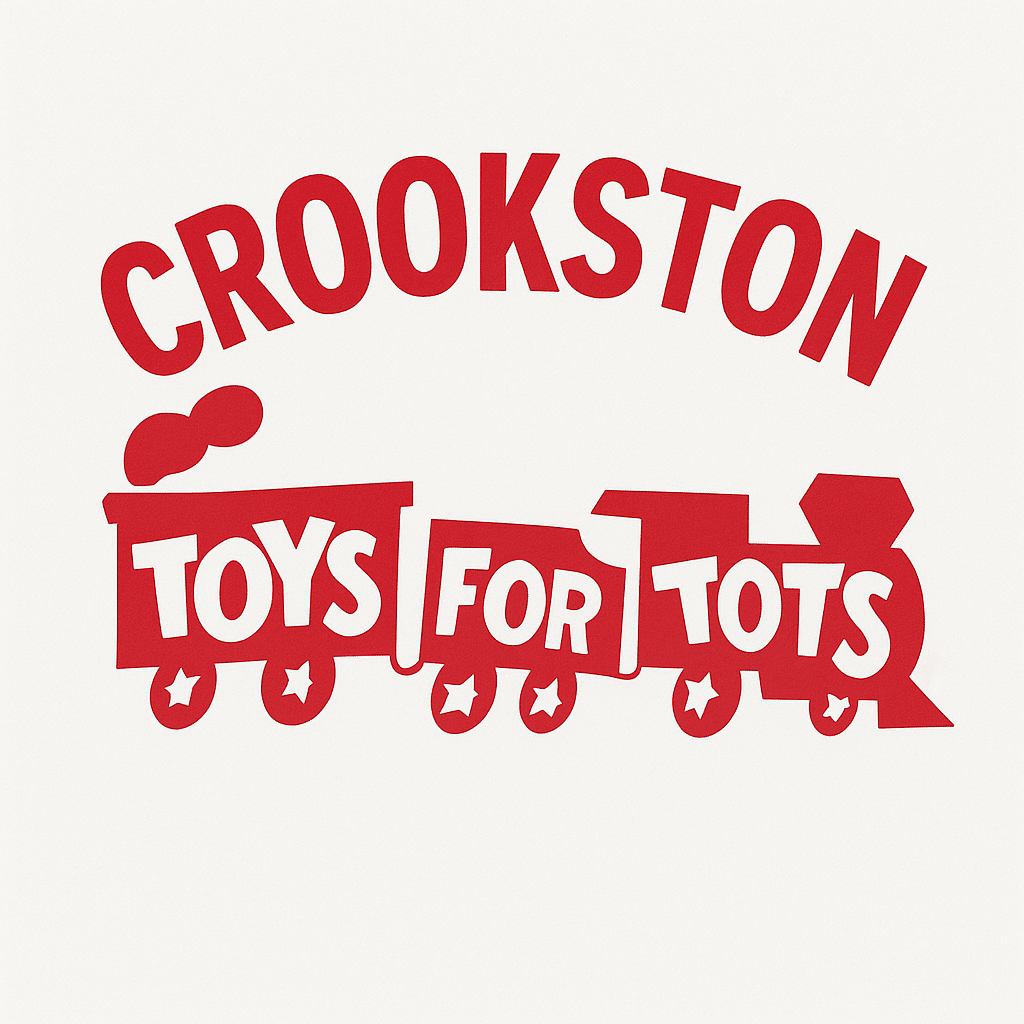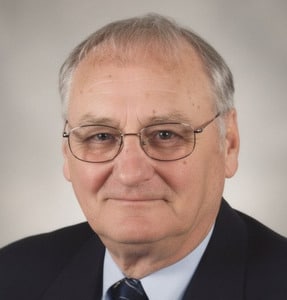The Crookston City Council held its second strategic planning mission of the year, continuing discussions on City Councilmembers’ roles on non-city boards and committees, the proposed corridor study of downtown streets, the city’s image, and gathering community input. The first meeting was held on February 17 (here). The City Council left the meeting with plenty to continue discussing as they work on establishing their direction.
CITY COUNCIL ROLES ON NON-CITY BOARDS AND COMMITTEES
Although there was a considerable conversation on the roles and responsibilities of the City Councilmembers on non-city boards and committees and the ethical nature and perceived or real conflicts both Monday night and two weeks ago, there still seems to be a need for more significant discussions to happen. On Monday, City Administrator Amy Finch and City Attorney Corky Reynolds discussed the three types of organizations outside the City Council’s standing committees where conflicts may occur explained, Finch. “We engaged our city attorney to do a follow-up discussion on the City Councilmembers seated on non-city boards,” said Finch. “And how each board operates a little differently. The CVB (Crookston Visitor’s Bureau), which receives tax, might need some oversight from the city and how the City Council could facilitate that. Then, separate entities like the DCDP (Downtown Crookston Development Partnership) may just be voting on projects and coming to Council with requests. And then, CHEDA (Crookston Housing and Economic Development Authority), which is set up statutorily. It allows for seven-member boards requiring a minimum of two voting-(City Council)members but, actually, the Council could act as the whole CHEDA Board.”
According to Minnesota Statute 469.095, Subd. 2 (c), two City Councilmembers must be voting members of a city economic development authority. At the same time, (e) provides a statutory ability for the City Council to make up the entire economic development authority board. The City Council set the CHEDA Board with two City Councilmembers at its creation.
The information being provided is to have the City Council consider working with those outside entities in a way that limits a real or perceived conflict of interest as a liaison or non-voting ex officio. City Councilwoman Kristie Jerde, who said she was one of the City Councilmembers who requested the discussion, questioned whether there is the perception that a vote in favor of an item on an outside board is seen as an endorsement or a conflict if it comes back before the City Council. “I think we’re just trying to clarify what our roles and responsibilities are as City Council people,” said Jerde. “I think it’s been really helpful with Corky coming in, and the discussion we’ve had has been very productive. Ultimately, I think the end goal is transparency and doing what’s best for our city and constituents.”
Councilman Tom Vedbraaten asked how it could be a conflict of interest if someone were to vote on something if they have no skin in the game. Councilman Steve Erickson also asked if other cities had run into legal issues over this matter. Reynolds said that he’d come across two other cities with unclear issues over councilmembers being placed on other committees in limited research. While neither had the type of personal conflict of interest Vedbraaten referred to, both moved to liaisons because of something they either questioned being associated as a perceived view of the City Council.
Reynolds and Finch also clearly indicated that the City Council should be involved in those committees and provide reports to the City Council. The question presented was whether the City Council members should be voting members. Jess Bengston, CVB, said there would be a cost to some organizations like the CVB to rewrite and register new bylaws with the State of Minnesota.
While not sold on the idea, most councilmembers appeared to be open to a new approach. However, Vedbraaten questioned why a big deal was being made of something he thought was just fine. “I think on some of it, we’re making too big a deal out of it,” said Vedbraaten. “They went fine up until some of these things are brought up. I just don’t quite understand why we’re trying to change the way they work. There are some of them where state statute says we have to be on them. Like the CHEDA Board, that’s a state statute that if you have a five-member board or a seven-member board, you have to have two councilmen on it. Like the CVB, that’s tax dollar money coming in. I do feel the city should be involved in that, so we see where the money is going.”
Vedbraaten also said he’d vote against something at City Council he’d voted for a previous meeting, using an example of the city being unable to fund something. “Just because you vote that way because when you’re on a board doesn’t mean that you’re going to vote the same way at the council,” said Vedbraaten. “If they bring it back to the Council and if the money that needs to be given to them by the council, if we don’t have it, you can’t give it. So, then you might vote yes on a good idea in your board, but you might vote no here when you have to open up the checkbook because you don’t have it. Even like at home, I look at a project – oh yeah, it’s a good project – but then I look at my checkbook – well, I can’t do it – so, it’s one of them things.”
Vedbraaten also questioned why there was discussion about including discussion topics on the City Council meeting instead of leaving them for Ways & Means meetings despite the previous discussion on the City Charter and a Ways & Means Committee’s traditional financial responsibility. He said having more items on the consent agenda would mean more stuff gets pulled for the regular agenda. Finch explained those items would come to the City Council on the regular agenda where the Council could still have its discussions and table items for more information. Reynolds also said that a typical agenda for an elected body has fewer consent items and more regular agenda items that need discussion.
Finch said she and Reynolds would continue to provide the City Council with information on the topic until they have a solution for where they want the topic to go. “Don’t think we were ready for any kind of decision, but we’ll likely come back with a little bit more organized information for them to look at to continue discussions at a later time,” said Finch. “From each meeting, we get to home in a little bit more on what information they would like us to bring back to them. We will continue to work to get to the solution that they want it to be.”
MnDOT CORRIDOR STUDY
The committee also left Monday’s meeting requesting more information about the corridor study for downtown Crookston. Finch said she provided them with the MnDOT study from this fall about the usability of the downtown sidewalks by email. However, more questions arose Monday.
Councilman Clayton Briggs asked if the city were to accept a project that made changes to the Highway 2 corridor, would it affect Main and Broadway south of Robert St to the two bridges. Those sections are city streets, not affected by the corridor, and whether to include them hasn’t been decided yet. Moreover, several City Council members again expressed an interest in having all of downtown studied, including Dylane Klatt. “I think we have an opportunity to, I guess in my mind, to look at all the (downtown) city streets as a part of the study,” said Klatt. “Whether we do any type of construction on them down the road, that’s a whole different discussion to have. At least we have a starting point on what it’s going to cost to do each street.”
Erickson also asked if they should consider including the bridges in the study because of the work they needed. He said Public Works Director Pat Kelly had been talking about the condition of the decking for a few years. Specifically, Kelly had discussed the condition of the South Broadway Bridge (here). The City Council approved proceeding with the 2021 street improvements on February 9 (here) and accepted the recommendation of the Planning Commission that the proposed improvements were consistent with the city’s comprehensive plan on February 23 (here), which includes $450,000 in federal and state funding for the concrete mill and overlay of the South Broadway Bridge with no assessment to Crookston residents.
Finch said Kelly’s suggestion was to include South Broadway and South Main to the bridges and 2nd street between Broadway and Main in the corridor study. Councilman Wayne Melbye asked if they shouldn’t include all the streets to address the infrastructure that may need to be moved if a project happens. Finch said Kelly would be more able to answer that at the City Council meeting on March 8. “We are going to invite our Public Works Director Pat Kelly to speak to the Council next Monday during their City Council meeting,” said Finch. “We’re also going to reach out to Matt Upgren (District 2 Project Manager) at MnDOT to clarify some of those questions on exactly what streets are proposed. If Council feels that they have enough information and are able to have their questions answered, will set up that if they are ready to make a decision on moving forward on certain city blocks and/or if they wish to commit to moving forward on the study, we will certainly accept action on that item. If they wish just to discuss it and send it back to staff level for more information, we’re open to that as well.”
GATHERING COMMUNITY INPUT/CITY IMAGE
Under the topic of gathering community input and city image, Finch suggested a couple of survey options that the city could proceed with. “We talked about a community survey utilizing different partners,” said Finch. “The League of Minnesota Cities has a free standard, canned survey the city can push out at no cost if you’re a member. They bring back the results, analyze them, and summarize them back. We discussed using community partners like UMC, maybe UND. Are there any classes that could help us create the survey, help us get it out, get the results back, analyze them? It seemed like there was some good feedback from the council that they’d like to see some more information on that. Then we talked a little bit about advertising, how do we get that out.”
Erickson noted the need for a master calendar for the community again. And Councilman Joe Kresl suggested that the city’s Cable Access Channel 3 would be another avenue to share that information. Finch said new City of Crookston IT Director Chad Palm has been looking into some upgrades. “The survey would have to be really purposeful and thoughtful about information are we trying to get back,” said Finch. “Asking questions that we’re prepared to go back and analyze and do something with. Then, we talked about Channel 3. Having our IT Director come back and give us some information – what is needed to upgrade that.”
Jerde, who works as the Assistant Director for Advertising and Exhibits for NASPA (a professional organization for student affairs administrators in higher education), suggested some specific advertising that could benefit Crookston. “Working in advertising for a non-profit association, one of the things we try to do retargeting advertising,” said Jerde. “Using the traffic from our city website, we could target those individuals from this area to spread the word about what is going on with Crookston as well as asking for feedback. I think that would be really helpful. I also think Facebook advertising also gives us an opportunity to create the demographic that we’re looking for as far as the area and also be purposeful about connecting with our constituents.”
Finch also commended the City Council for identifying Child Care as an issue within the community during the last meeting and said it was important for the community to hear that the City Council wants to be leaders in solving the issue. “It’s a big issue in our community,” said Finch. “It’s an issue not only for the parents in our community but some of our industries and getting coverage for their employees for the later shifts for those hours. Since that meeting, we’ve reached out to some community partners to talk a little bit. I’ve been contacted by different organizations expressing thanks to the City Council for acknowledging it. It sounds like they want to be a champion, a partner in the discussions and conversations on generating ideas in generating ideas to find a solution that’s appropriate for Crookston.”
